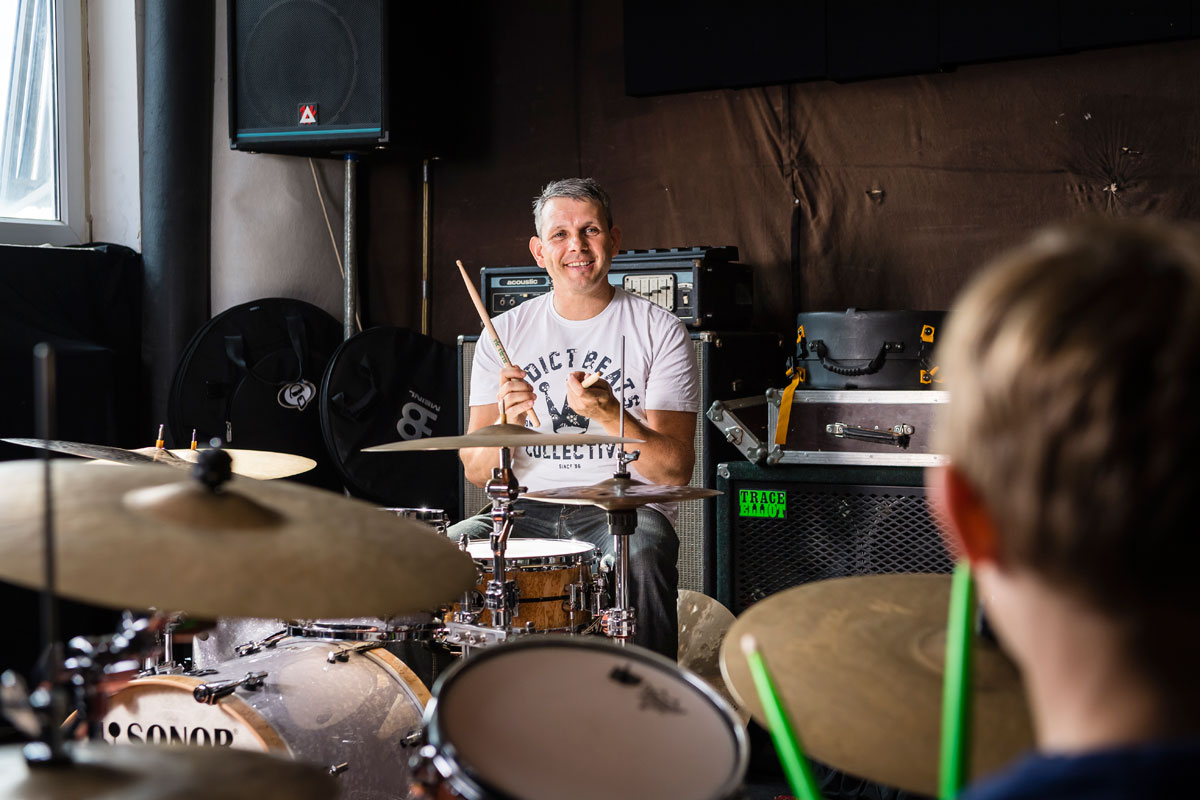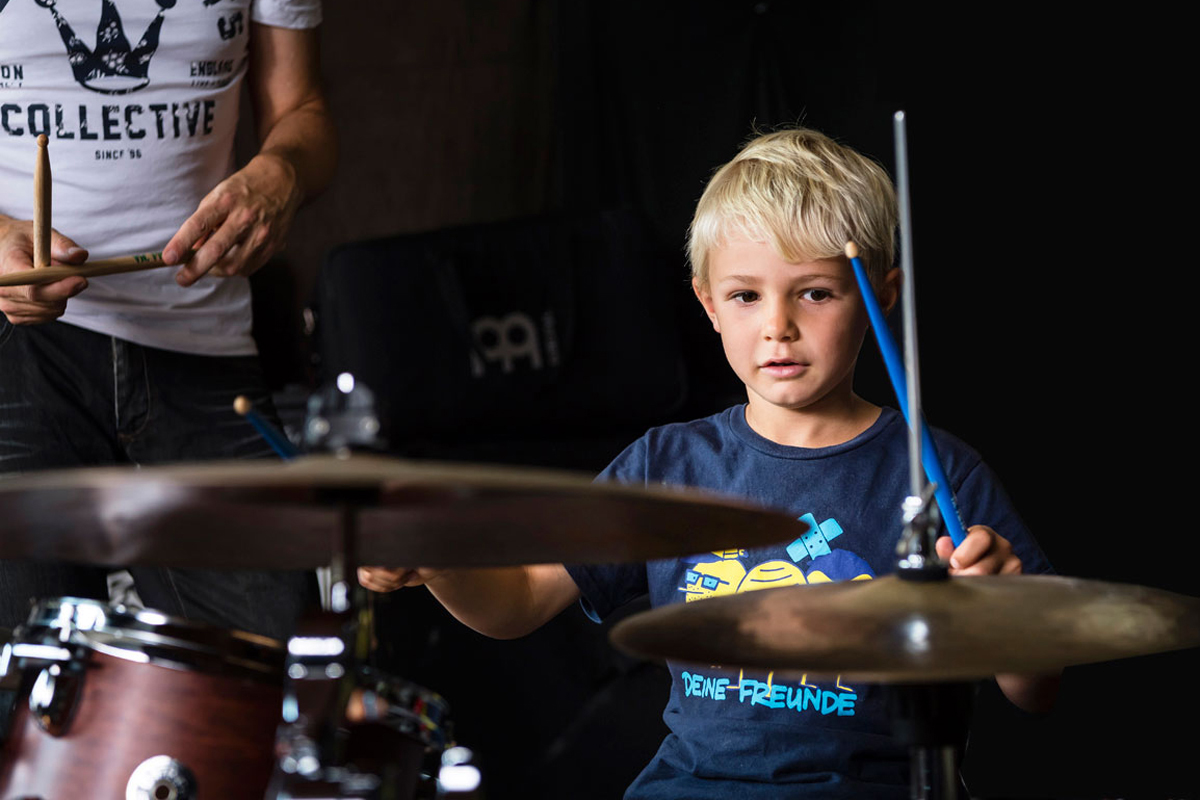
When learning an instrument it’s of paramount importance that it be fun. This is a key tenant of my teaching style: to create a learning environment that covers classical approaches to drum set playing, while also making room for creative and fun approaches that stress efficient practice methods.
To create a personalized program of study is especially important to me, and the starting point for any teacher-student relationship is an assessment of previous musical experience. This means that lesson content, as well as teaching methods, are tailored to suit each student’s needs.
My aim when teaching is to give students a foundation in which they have the confidence and knowledge to go on and play in music ensembles.
For whom?
Anyone with an interest in pursuing drums, regardless of previous experience, from the age of 7 is welcome to take lessons. Lessons are offered for pre-beginners to competent musicians looking to improve their technique and attain a professional grade skill set.

Content
My tuition aims to educate and further the elementary skills necessary for playing the drum set. These include for example:
- How to set up the instrument, seat height
- Grip – fundamental technical skills start with the knowledge of the do‘s and dont‘s of holding sticks
- Rebound & the relevant laws of physics when it comes to drumming
- Natural drumming: learning the importance of looking at the anatomy of the human body and drawing the right conclusions to pursue healthy drumming
- Concepts for hand – arm & finger technique: from the Free Stroke (G.L. Stone / Stick Control) to the Moeller Whip & Push-Pull
- Foot techniques – learning to control the Hi Hat & Bass Drum pedal – heel down vs heel up
- Developing coordination – snychronisation – independence of the limbs
- Development of rhythm feel / time feel / timing & microtime (subdivisons) – training of the central skillset for articulation on the instrument
- Sight reading – ear training – learning how to transcribe your parts & how to notate the instrument
- How to analyse a song structure by ear – following transcriptions – developing chart reading skills – from interpreting to covering an orioginal drum part
- Building a vocabulary to draw from – learning the key rhythmic figures and their use
- Styles of music and the specific approaches as a drummer
- Learning to control Dynamics (how to play from quiet to loud) – this includes areas such as: accent studies – Gost Notes – feathering the Bass Drum
- Rudimental studies – from Single to Double Strokes to Flams – how to make use of these elements developed for marching drumming when playing a drumset
- Tuning the instrument / sound aesthetics (how to achieve the sound we want from our drumset)
- Concepts for creative & effective practising
- My lessons emphasize the importance of understanding and connecting to the “groove”. In practical terms this will mean we will engage with different Groove concepts. These will help us to build a vocabular /repertoire necessary to communicate in different musical contexts. Amongst other we will get to know 5-way-independence – a system developed by Gary Chester. This approach trains coordination & independence and will lead to more control of the instrument as musical creativity. Groove can be described as an amalgamation of timing, emotion and technique (tension / release) in the context of repetition. Groove is what makes people want to dance when listening to music. “Groove“, as Steve Gadd put it, “is an agreement with the guys you’re playing with“, “when you lock it everything feels good“.

A few words on music
Music is an expression of life and emotions. Playing with others can best be understood by invoking the metaphor of conversation. The successful interaction between musicians is grounded in the importance of listening and answering to establish a rapport – just as it is in a conversation.
The expression of emotions takes center stage. It is this aspect of music, the way musicians interpret their
emotions through melody, harmony and rhythm which has the biggest impact on the listener.
To do this successfully a language for the instrument which facilitates “listening” and “answering” is needed, just as it is in a conversation.
With regards to drum tuition, I focus on establishing techniques and a vocabulary which allow students to
express themselves in their own unique way.